Hanko, an integral part of Japanese culture and art, represents a fascinating intersection between tradition and aesthetics. Serving as personal seals or stamps, Hanko and its variations such as Inkan and Rakkan, have been pivotal in authenticating documents, artworks, and even in the illustrious world of Ukiyo-e. This article unfolds the narrative of Hanko, exploring its historical depth, artistic implications, and enduring legacy in Japanese art.
The Quintessence of Hanko in Ukiyo-e
Within the vibrant scenes and intricate details of Ukiyo-e, Hanko marks more than mere signatures; they embody the soul of the artists, sealing their identities and craftsmanship into each piece. Ukiyo-e, a genre that flourished during the Edo period, utilized Hanko not only for artist identification but also as a hallmark of authenticity and artistic pride.
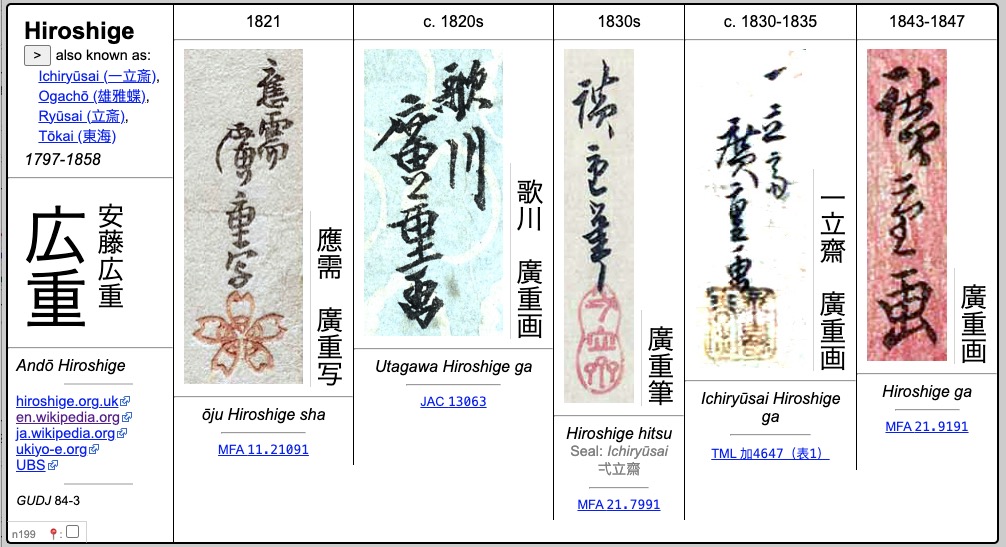
Distinctive Marks: Personal Hanko and Rakkan
Artists in the Ukiyo-e domain often employed personal Hanko or Rakkan-in to imprint their unique identity (name, pseudonym, court rank and or date of completion) onto their creations. These seals, carved with care, ranged from simple Kanji characters to elaborate designs reflecting the artist’s persona. Rakkan, specifically, denotes the impression of such seals, serving as a timeless testament to the artist’s presence and approval of the work.
There are a few databases of ukiyo-e artist’s signatures and seals such as on ukiyosgn.net.
The Different Seals on a Ukiyo-e Print
Ukiyo-e art prints can carry many seals or Hanko, identifying different entities. Interpreting the intricate details found on Japanese ukiyo-e prints involves deciphering various standardized elements, such as titles, artist’s signatures, and a variety of seals, each carrying distinct information about the print’s creation and origin. Here’s a breakdown of these elements into specific subsections for clearer understanding.
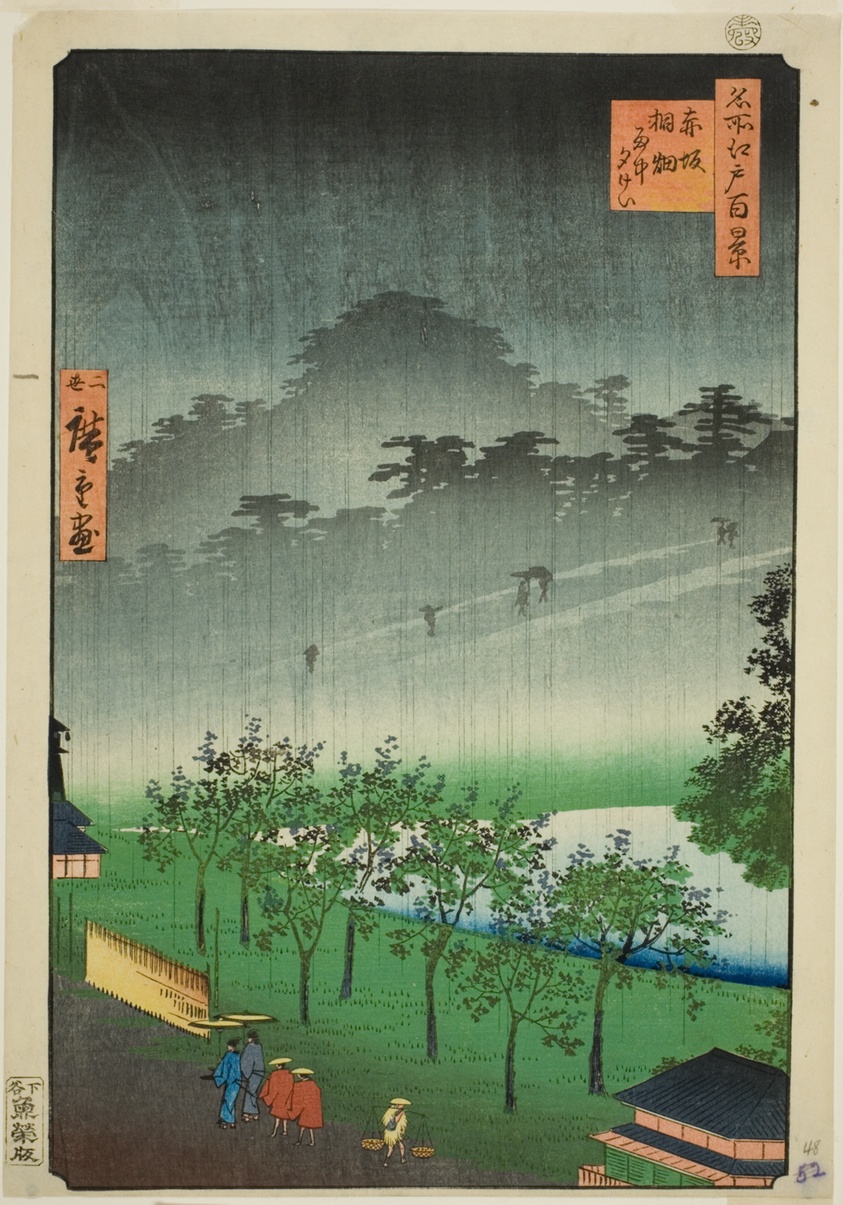
Titles and Subtitles
Titles on Japanese prints, whether for individual designs or series, often involve imaginative combinations of ideograms (kanji) that may pose translation challenges. These titles can convey a wide array of meanings and are essential for understanding the print’s context or theme.
Artist’s Signatures and Seals
Artists’ signatures, appearing in forms like studio names or distinctive marks (kakihan), are crucial for identifying the creator. These signatures might include acknowledgments to a master, indicate name changes, or signify a work’s authenticity. Artists such as Katsushika Hokusai are known for frequently changing their signatures, adding a layer of complexity to their identification and dating.
In addition to signatures, artists employed seals that could vary significantly, aiding in identifying the print’s design period. These seals derived from various sources, including the artist’s name, emblems of past masters, or literary names.
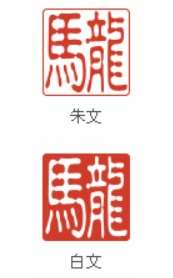
Traditionally, a Rakkan with white letters is used for names, whereas one with red letters is used for the artist’s pseudonym or pen name.
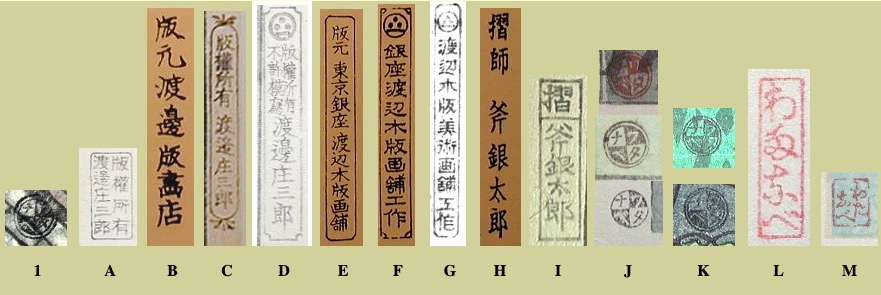
Publisher’s Seals
Publisher’s seals identify the hanmoto or publisher of the print, ranging from simple trademarks to elaborate cartouches. These seals can include the publisher’s name, address, and sometimes additional information, serving as a hallmark of the print’s origin.
For an in depth study, take a look at the different Watanabe Publisher Seals.
Date Seals
Date seals provide information on the print’s publication date by indicating one of the 12 zodiac animals and a specific month. This information, coupled with other seals or evidence, helps pinpoint the exact year of publication.
Censor’s Seals
Initially enforced by the publishers’ guilds and later by government-appointed censors, censor seals indicate the approval of the print’s content. These seals, evolving over time from kiwame (“approved”) to aratame (“examined”), are key to dating prints with precision.
Printer and Block Cutter Seals
Although rarely identified in ukiyo-e prints, seals or inscriptions naming the printer and block cutter recognize their significant contributions to the print’s production. These mentions are infrequent but offer insight into the collaborative nature of printmaking.
An astute collector of ukiyo-e should have knowledge of these various seals. For example, recognizing publisher’s seals and their relevant time periods can assist in determining the age of the print. Remember, that one ukiyo-e print could have been published in several editions, with a different rarity and value for each.
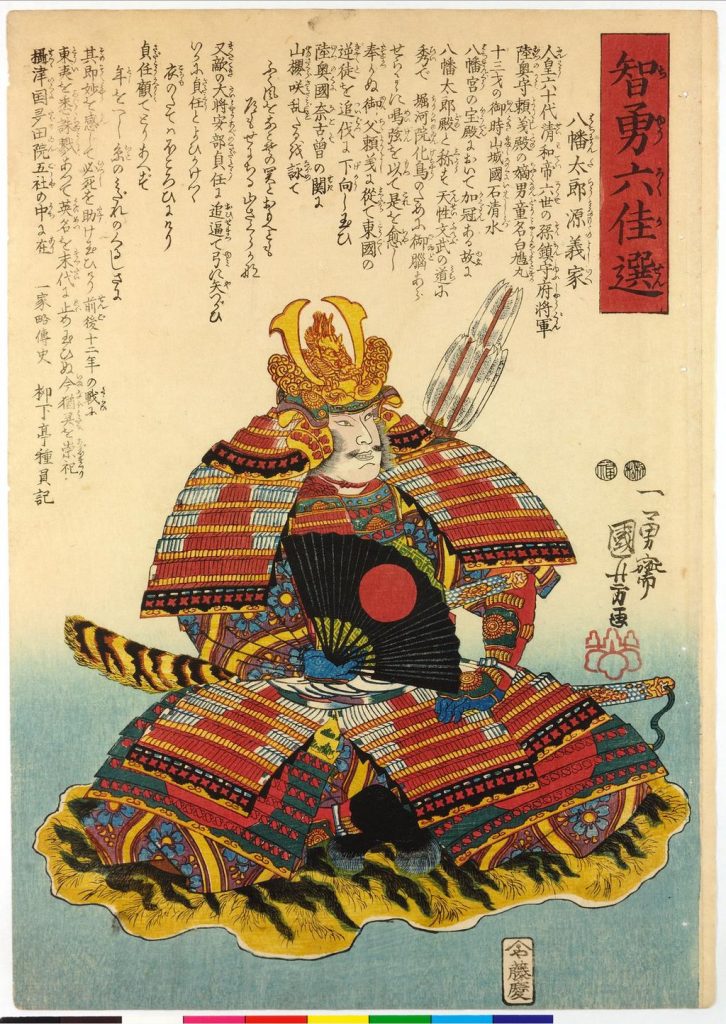
The Aesthetic and Historical Importance of Hanko
Beyond their practical function, Hanko imbue Ukiyo-e prints with a deeper aesthetic and historical dimension. They offer insights into the lives, preferences, and social standings of the artists, making each Hanko a narrative piece of its own. Collectors and scholars alike treasure these marks for the stories they tell and the authenticity they confer upon the artwork.
Inkan’s Role Beyond the Artistic Realm
Inkan, a term often used interchangeably with Hanko, extends its significance beyond art into the realms of legal and personal identification in Japan. This broader application underlines the cultural importance of these seals, as they continue to play a pivotal role in modern Japanese society, affirming identity and authenticity in personal and professional contexts.
Hanko are integral to the cultural and administrative practices in Japan, serving various purposes across personal, corporate, and religious spheres. For personal use, hanko are categorized into three main types, each with its distinct functions and applications:
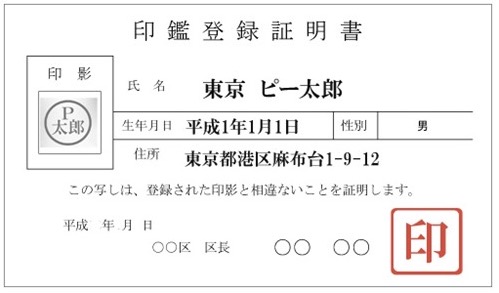
Jitsuin: The Official Registered Seal
The jitsuin is an individual’s official seal, recognized by legal and governmental bodies. It is used for significant transactions such as purchasing vehicles or obtaining mortgages. To use a jitsuin, it must be registered at the owner’s local ward office or city hall, where a certificate is issued to verify its authenticity. This seal represents the highest level of personal identification and authorization in written transactions.
Ginkoin: The Registered Bank Seal
The ginkoin, specifically designated for banking transactions, plays a crucial role in managing finances. It is employed for a range of banking activities, including opening new accounts and executing fund transfers. Like the jitsuin, the ginkoin may need to be registered with the bank, ensuring secure and verified financial operations. This seal simplifies banking procedures, linking the individual’s identity to their financial transactions.
Mitomein: The Personal Seal for Everyday Use
The mitomein is a less formal seal compared to the jitsuin and ginkoin, used for routine tasks and personal matters. Common uses include signing off on documents at work or confirming delivery receipts when receiving parcels. The mitomein is widely used for its convenience in daily activities, serving as a personal signature for non-critical acknowledgments and approvals.
Each type of hanko plays a specific role in the life of individuals in Japan, from conducting significant legal and financial transactions to facilitating daily tasks. These seals embody the blend of tradition and practicality in Japanese culture, ensuring authenticity and authority in various aspects of personal and professional life.
You can get customized personal seals in Japan and online.
Challenges and Future of Hanko Preservation
As we advance into the digital age, the traditional art of Hanko faces new challenges, from preservation to relevance. However, efforts to digitize collections and educate the public about Hanko’s cultural significance are underway, ensuring that this unique aspect of Japanese art and heritage continues to inspire and resonate across generations.
The Legacy and Evolution of Hanko
The legacy of Hanko in Japanese art, particularly in Ukiyo-e, is a testament to the enduring nature of cultural traditions. As contemporary artists explore and reinterpret Hanko, this ancient practice finds new life and relevance, bridging the past with the future and continuing to enchant art lovers around the world.
Frequently Asked Questions on Hanko
What is a Hanko?
A Hanko is a personal seal or stamp used in Japan for authentication purposes, traditionally carved from wood or stone.
How do Hanko and Inkan differ?
While both terms are often used interchangeably, Inkan generally refers to seals used for official and legal purposes, whereas Hanko can denote more personal or artistic uses.
What is the significance of Rakkan in Ukiyo-e?
Rakkan refers to the impression made by a Hanko, especially in the context of Ukiyo-e, where it signifies the artist’s approval and identity on the artwork.
Why are Hanko important in Japanese art?
Hanko serve as a unique signature, authenticating and personalizing artworks, and hold historical value by offering insights into the artist’s identity and era.
Can Hanko still be found in contemporary Japanese art?
Yes, Hanko continue to be used by contemporary Japanese artists, both in traditional arts and in modern interpretations, reflecting a blend of heritage and innovation.
How are efforts being made to preserve Hanko?
Preservation efforts include digitizing Hanko impressions, educational programs to raise awareness, and initiatives to maintain the craft of carving Hanko, ensuring its continuation for future generations.
Read more:
- Collecting Ukiyo-e Art: A Guide for Beginners
- 11 Most Influential Ukiyo-e Artists: Masters of Japanese Woodblock Prints
- The 12 Most Important Ukiyo-e Artworks of All Time
- Kuniyoshi Utagawa: A Master of Ukiyo-e and Musha-e
- The Most Expensive Ukiyo-e Art Sold at Auction: A Record-Breaking Journey of “The Great Wave”

At the Art of Zen we have a selection of original Japanese art prints in the ukiyo-e and Japandi style. Some of our best selling work is Mount Fuji wall art and Japandi wall art.
Add some zen to your space with brilliant original art from the Art of Zen shop.
Featured image above of Hand carved Hanko seal from Tokyo Weekender.
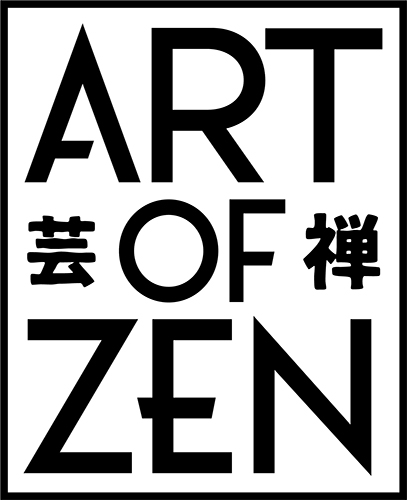



0 Comments